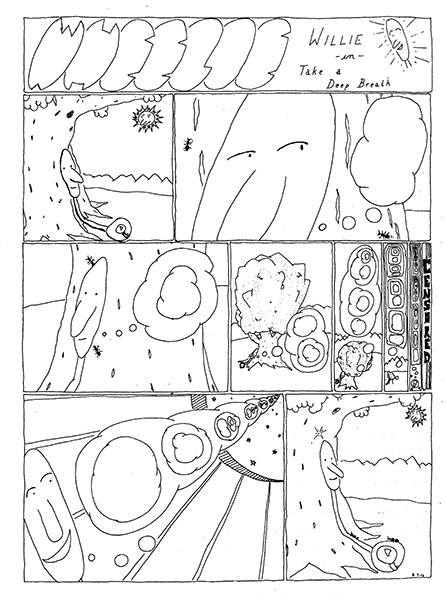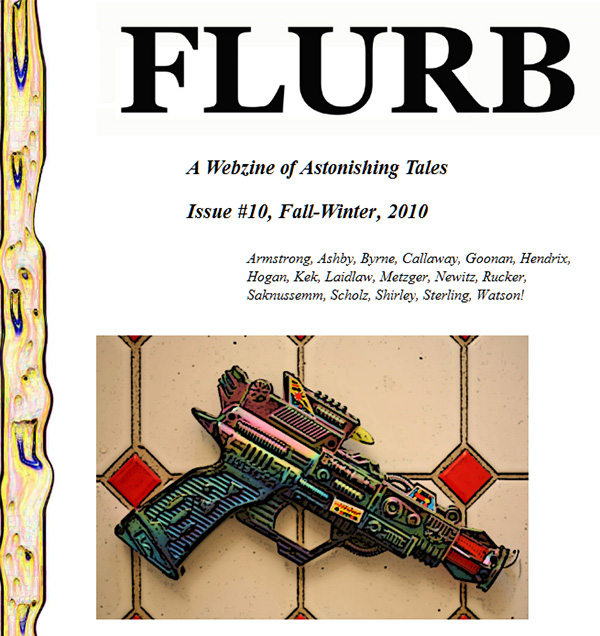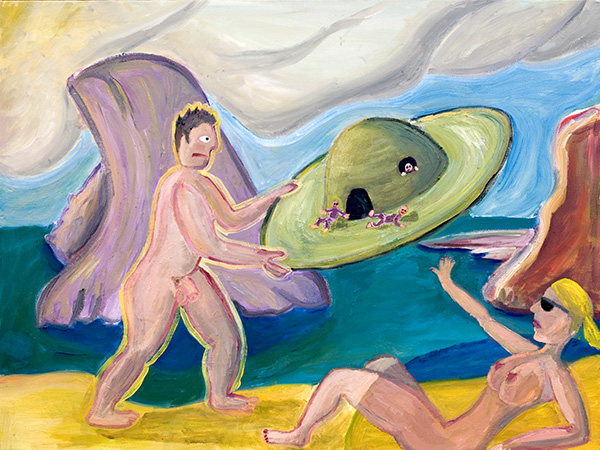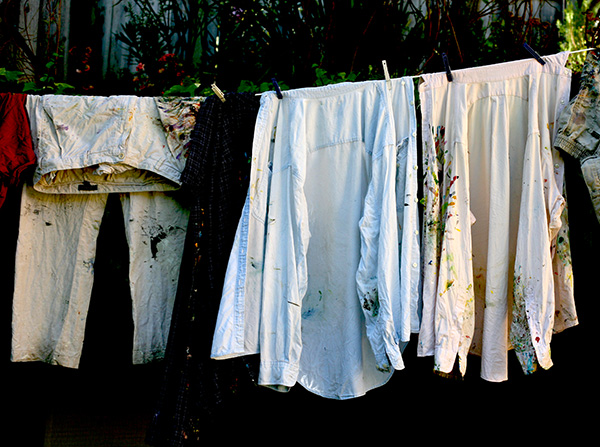I rode the CalTrain commuter train up to San Francisco alone, with bicycle, there to cycle over to Richard Kadrey’s house for a pot-luck afternoon party thrown by him and his wife Nicola Ginzler.
Lately the achievements I strive and scheme towards haven’t felt so rewarding. Sometimes I begin to wonder why I get so worked up about my little events, my small victories, my incessant machinations for fame. Sometimes I wish I could stop trying to accomplish something and frikkin’ relax. So…I headed off to Kadrey’s.
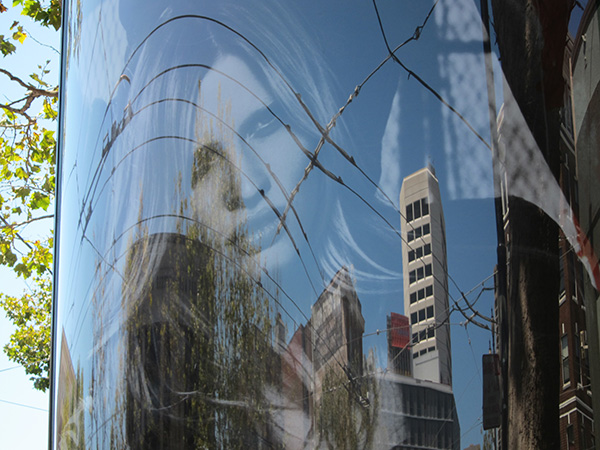
It was fun to ride my bike in the city, although I was at times worried about getting lost, or about being flattened by the traffic. Cycling through the empty quarters of the “knee” in SoMa where the city grid turns, I saw a bum with two stolen bicycles, one (with no wheels) on his shoulders, the other being rolled along.
Riding up towards Market, I was side to side with a motorcycle ridden by a Hells Angel, and then, another block further, we came to a gathering of a hundred of Hells Angels and their ilk outside some kind of motorcycle store. A few of them good-humoredly jeered at me, the retired professor riding by with sensible yellow bands on his trouser bottoms and his yellow safety windbreaker flapping.

I found my way to Rudy, Jr.’s old neighborhood on lower Haight St. between Webster and Steinhardt. I was a little too early for Richard’s party, and I had some time to kill. I walked the bicycle along the sidewalk looking things over. One of the stores had posters for Lazertits, images of women with rays of light shooting out of their breasts. They have a website, I think these are women that dance on stage with literal lasers in their bras. I have no idea what it really means, but the posters are cool.
The Horseshoe café where I used to hang with Rudy Jr. was gone. I was tempted to eat a platter of food at Memphis Minnie’s, a great BBQ place, but I wanted to save some stomach-room for Richard and Nicola’s spread. So I had a light snack at the International Café, not too bad a place—I like any café that has couches. Going inside, I felt great concern about bicycle thieves, and I chained my whipped old yellow Rockhopper beater to a lamp-post right outside the café window, running the chain through the frame and the two wheels.
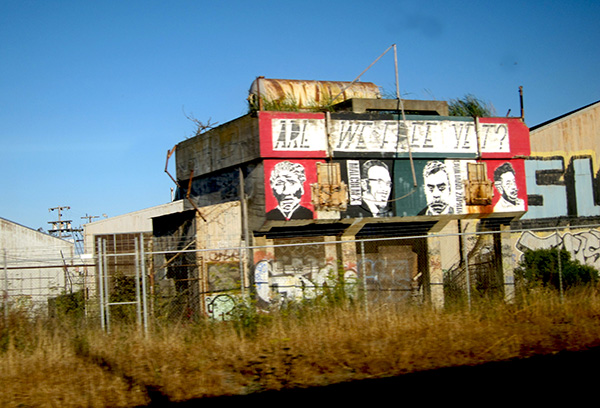
[I shot a few photos from the moving train yesterday, they’re a little blurry, but kind of interesting, like images from the subconsciousness of the hive mind.]
When I got to the party, I initially thought I couldn’t talk to anyone—this is part of the reason why I used to immediately get drunk at parties. But, as it happened, I ended up in a series of interesting conversations. I’ve slowly, slowly learned that it helps to walk up to people and introduce yourself…as opposed to just staring fishily their way.
I met a gilder, that is, a man who hammers thin sheets of gold onto things like picture frame or cornices. The sheets are very then, a folder with fifty sheets weighs only about an eighth of an ounce. But, the gilder told me, the price of gold has never been so high.
I met an electronic musician who uses some newer ware than the Max/MSP that my friends at the Iannis Xenakis lab in Paris were using, I forget the name of the new ware, some funny name. He agreed with me that it’s criminal to use a repetitive wallpaper rhythm loop, when it’s really so easy to put in a little procedural randomness and texture with something as simple as a logistic map feedback loop. I like to think of that word as feebdack.

I met a leather-clad pair of women who said they’d been partying for two days, first at the Drag King party, and then at the Drag Queen party. One of them said, with a laugh, “There were even some bio women competing to be the big Drag Queen.” It took me a second to grasp that she meant regular, non-transgendered women. Richard took us inside and showed us some of the erotic and fetish photos that he takes for his online Kaos Beauty Klinik site.
Richard is such a trip, so San Francisco, so wholesome and matter-of-fact about his esoteric preoccupations—things like tattoos, the naïve artist Henry Darger, serial killers, obscure films and erotic photography. His two novels about Sandman Slim are doing really well, and he has a third in the works. I’m glad to see him getting some rewards from the publishing world.
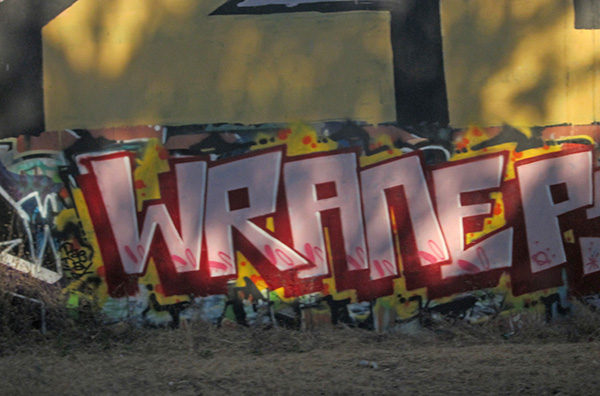
Shortly before I left, a big guy was talking to Richard about publishing and then it turned out the guy was Jason Williams of Night Shade Books. As it happens, my latest novel, Jim and the Flims, is under consideration at Night Shade right now—Tor isn’t taking it, as they’re already publishing my memoir, Nested Scrolls, next year, and didn’t want to load up with two of my books. The Night Shade guys seem receptive. I could be due for a new start.
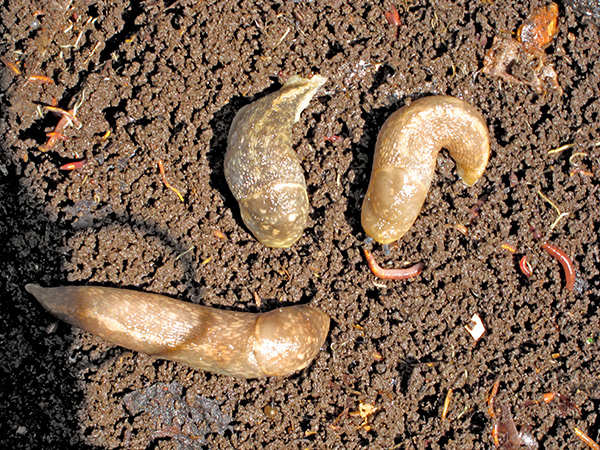
It was good day. I got away from it all, and ate a huge amount of food at Richard and Nicola’s, and then, in the end, the business side of things came back at me, in its own way, on its own schedule and in an encouraging way.
And on the train up, I did a little work on the still-embryonic Turing & Burroughs novel—I left my computer at home, but brought some scraps of print-out along. Mr. Day Off. I’m visualizing aliens that resemble large slugs and are called skugs.

